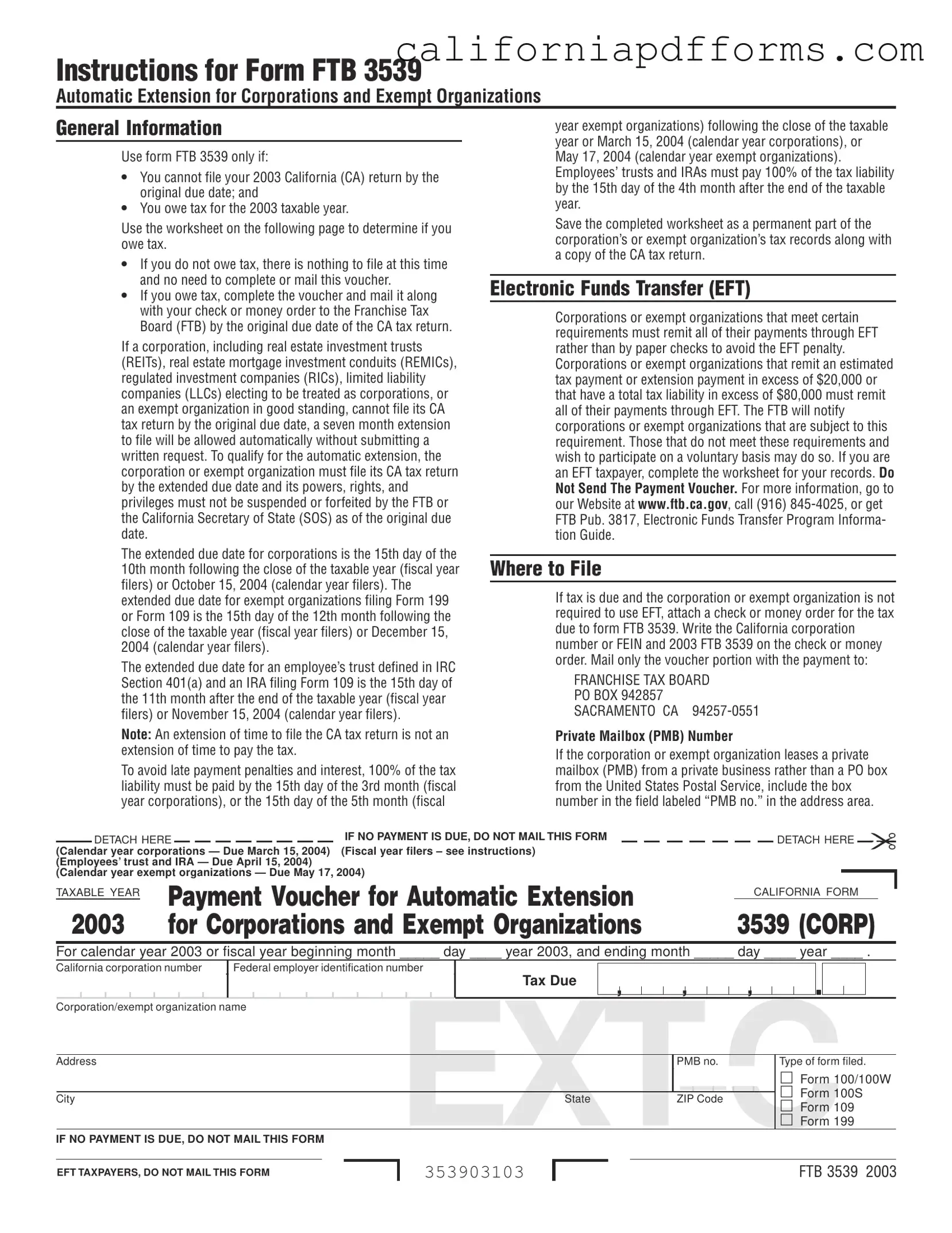The California Form 3539 is designed for corporations and exempt organizations to request an automatic extension of time to file their tax returns. If a corporation cannot file its California tax return by the original due date and owes tax, this form allows them to extend the filing deadline without needing to submit a written request. It is important to note that this extension is only for filing and does not extend the time to pay any taxes owed.
Corporations and exempt organizations that meet specific criteria must file Form 3539. You should use this form if:
-
You cannot file your California tax return by the original due date.
-
You owe tax for the taxable year.
-
Your organization is in good standing with the Franchise Tax Board (FTB) and the California Secretary of State.
If you do not owe any tax, there is no need to file this form. Simply ensure that your tax return is filed by the extended due date.
The deadlines for filing Form 3539 vary depending on the type of organization and its fiscal year. For calendar year filers, the deadlines are as follows:
-
Corporations: October 15, 2004
-
Exempt Organizations filing Form 199: December 15, 2004
-
Exempt Organizations filing Form 109: November 15, 2004
For fiscal year filers, the extended due date is the 15th day of the 10th month following the close of the taxable year. It is crucial to remember that while you may receive an extension to file, you must still pay any taxes owed by the original due date to avoid penalties.
If you fail to file Form 3539 by the original due date and owe taxes, you may incur penalties and interest. A late payment penalty will be added to your tax due, and if your tax return is not filed by the extended due date, a delinquency penalty will apply. Additionally, if your organization’s powers or privileges have been suspended or forfeited, the automatic extension will not apply, and further penalties may be assessed.
To complete the Tax Payment Worksheet, follow these steps:
-
On Line 1, enter your total tentative tax, including any alternative minimum tax if applicable.
-
On Line 2, input your estimated tax payments, which may include prior year overpayments applied as a credit.
-
On Line 3, calculate your tax due by subtracting Line 2 from Line 1. If Line 1 is greater than Line 2, you have tax due; if not, you have no tax due.
Make sure to keep this worksheet as part of your tax records. If you owe tax, you must send the payment along with the voucher portion of Form 3539 to the FTB by the original due date.
